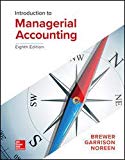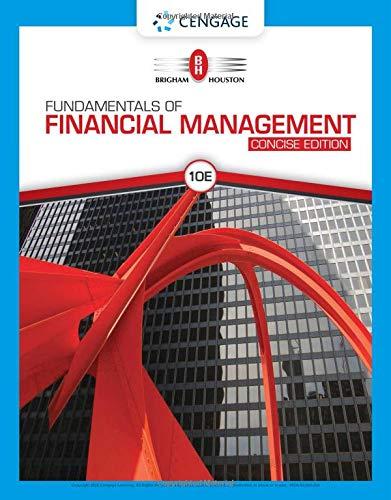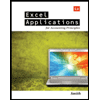
Concept explainers
In five years, Kent Duncan will retire. He is exploring the possibility of opening a self-service car wash The car nib could be managed in the free time be has available from his regular occupation, and it could be closed easily when he retires. After careful study, Mr. Duncan determined the following:
a. A building in which a car wash could be installed is available under a five-year lease at a cost of $1,700 per month.
b. Purchase and installation costs of equipment would total $200.000. In five years the equipment could be sold for about 10% of its original cost.
c. An investment of an additional $2,000 would be required to cover
d. Both a wash and a vacuum service would be offered. Each customer would pay $2.00 for a wash and $1.00 for access to a vacuum cleaner.
e. The only variable costs associated with the operation would be 20 cents per wash for water and 10 cents per use of the vacuum for electricity.
f. In addition to rent, monthly costs of operation would be: cleaning. $450; insurance, $75; and maintenance, $500.
g. Gross receipts from the wash would be about $1,350 per week. According to the experience of other car washes, 60% of the customers using the wash would also use the vacuum.
Mr. Duncan will not open the car wash unless it provides at least a 10% return.
Required:
1. Assuming the car wash sill be open 52 weeks a year, compute the expected annual net cash receipts (gross cash receipts less cash disbursements) from its operation. (Do not Include the cost of the equipment, the king capital, or the salvage value in these computations.)
2. What is the net present value of the investment in the car wash? Would you advise Mr. Duncan to open the car wash? Round all dollar figures to the nearest whole dollar.
Want to see the full answer?
Check out a sample textbook solution
Chapter 12 Solutions
GEN COMBO LOOSELEAF INTRODUCTION TO MANAGERIAL ACCOUNTING; CONNECT AC
- 20 Nelson and Murdock, a law firm, sells $8,000,000 of four-year, 8% bonds priced to yield 6.6%. The bonds are dated January 1, 2026, but due to some regulatory hurdles are not issued until March 1, 2026. Interest is payable on January 1 and July 1 each year. The bonds sell for $8,388,175 plus accrued interest. In mid-June, Nelson and Murdock earns an unusually large fee of $11,000,000 for one of its cases. They use part of the proceeds to buy back the bonds in the open market on July 1, 2026 after the interest payment has been made. Nelson and Murdock pays a total of $8,456,234 to reacquire the bonds and retires them. Required1. The issuance of the bonds—assume that Nelson and Murdock has adopted a policy of crediting interest expense for the accrued interest on the date of sale.2. Payment of interest and related amortization on July 1, 2026.3. Reacquisition and retirement of the bonds.arrow_forward13 Which of the following is correct about the difference between basic earnings per share (EPS) and diluted earnings per share? Question 13 options: Basic EPS uses comprehensive income in its calculation, whereas diluted EPS does not. Basic EPS is not a required disclosure, whereas diluted EPS is required disclosure. Basic EPS uses total common shares outstanding, whereas diluted EPS uses the weighted-average number of common shares. Basic EPS is not adjusted for the potential dilutive effects of complex financial structures, whereas diluted EPS is adjusted.arrow_forwardPlease explain the solution to this general accounting problem with accurate explanations.arrow_forward
- I need guidance with this financial accounting problem using the right financial principles.arrow_forwardGeneral Accounting Question Solutionarrow_forwardWhich is not an objective of internal controls?A. Safeguard assetsB. Improve profitsC. Ensure accurate recordsD. Promote operational efficiencyarrow_forward
- I need help finding the accurate solution to this general accounting problem with valid methods.arrow_forwardNelson and Murdock, a law firm, sells $8,000,000 of four-year, 8% bonds priced to yield 6.6%. The bonds are dated January 1, 2026, but due to some regulatory hurdles are not issued until March 1, 2026. Interest is payable on January 1 and July 1 each year. The bonds sell for $8,388,175 plus accrued interest. In mid-June, Nelson and Murdock earns an unusually large fee of $11,000,000 for one of its cases. They use part of the proceeds to buy back the bonds in the open market on July 1, 2026 after the interest payment has been made. Nelson and Murdock pays a total of $8,456,234 to reacquire the bonds and retires them. Required1. The issuance of the bonds—assume that Nelson and Murdock has adopted a policy of crediting interest expense for the accrued interest on the date of sale.2. Payment of interest and related amortization on July 1, 2026.3. Reacquisition and retirement of the bonds. Question 20 options: Paragrapharrow_forwardNelson and Murdock, a law firm, sells $8,000,000 of four-year, 8% bonds priced to yield 6.6%. The bonds are dated January 1, 2026, but due to some regulatory hurdles are not issued until March 1, 2026. Interest is payable on January 1 and July 1 each year. The bonds sell for $8,388,175 plus accrued interest. In mid-June, Nelson and Murdock earns an unusually large fee of $11,000,000 for one of its cases. They use part of the proceeds to buy back the bonds in the open market on July 1, 2026 after the interest payment has been made. Nelson and Murdock pays a total of $8,456,234 to reacquire the bonds and retires them. Required1. The issuance of the bonds—assume that Nelson and Murdock has adopted a policy of crediting interest expense for the accrued interest on the date of sale.2. Payment of interest and related amortization on July 1, 2026.3. Reacquisition and retirement of the bonds. Question 20 options: Paragrapharrow_forward
- 11 Which statement is correct about accounting for financial instruments? Question 11 options: All financial instruments are accounted for at fair value through OCI. All financial instruments are accounted for at amortized cost. All are accounted for in accordance to their economic substance. All financial instruments are accounted for at fair value through profit or loss.arrow_forwardWhich of the following is correct about the difference between basic earnings per share (EPS) and diluted earnings per share? Question 13 options: Basic EPS uses comprehensive income in its calculation, whereas diluted EPS does not. Basic EPS is not a required disclosure, whereas diluted EPS is required disclosure. Basic EPS uses total common shares outstanding, whereas diluted EPS uses the weighted-average number of common shares. Basic EPS is not adjusted for the potential dilutive effects of complex financial structures, whereas diluted EPS is adjusted.arrow_forwardI need help Which entry is correct for recording revenue earned on account?A. Debit Cash, Credit RevenueB. Debit Revenue, Credit Accounts ReceivableC. Debit Accounts Receivable, Credit RevenueD. Debit Unearned Revenue, Credit Casharrow_forward
- Principles of Accounting Volume 2AccountingISBN:9781947172609Author:OpenStaxPublisher:OpenStax College
 Fundamentals Of Financial Management, Concise Edi...FinanceISBN:9781337902571Author:Eugene F. Brigham, Joel F. HoustonPublisher:Cengage Learning
Fundamentals Of Financial Management, Concise Edi...FinanceISBN:9781337902571Author:Eugene F. Brigham, Joel F. HoustonPublisher:Cengage Learning Excel Applications for Accounting PrinciplesAccountingISBN:9781111581565Author:Gaylord N. SmithPublisher:Cengage Learning
Excel Applications for Accounting PrinciplesAccountingISBN:9781111581565Author:Gaylord N. SmithPublisher:Cengage Learning  EBK CONTEMPORARY FINANCIAL MANAGEMENTFinanceISBN:9781337514835Author:MOYERPublisher:CENGAGE LEARNING - CONSIGNMENT
EBK CONTEMPORARY FINANCIAL MANAGEMENTFinanceISBN:9781337514835Author:MOYERPublisher:CENGAGE LEARNING - CONSIGNMENT College Accounting, Chapters 1-27AccountingISBN:9781337794756Author:HEINTZ, James A.Publisher:Cengage Learning,
College Accounting, Chapters 1-27AccountingISBN:9781337794756Author:HEINTZ, James A.Publisher:Cengage Learning,





